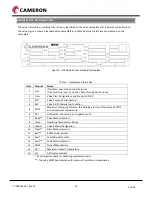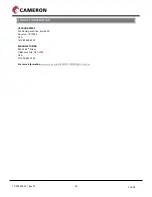
14
TC-003001-30 / Rev 01
Feb-02
These valves can be operated by one person. It is recommended that no extensions be used for operating the
valve. Using an extension or power tool to operate the valve voids all warranty and claims, and may result in
failure.
MAINTENANCE PROCEDURES
Under normal working conditions, 370D6 ball valves are designed for lengthy, reliable service. The following
recommended practices and procedures will ensure optimum performance.
DRAINAGE PROCEDURE
All valves can be drained and lubricated depending on application conditions, or anytime if desired. Valves may
accumulate water, scale, deposits, and other foreign matter during their service. These materials may damage the
valve in the following ways:
1.
At low temperature, ice may form inside the valve and hinder its normal operation
2.
Foreign matter may prevent the valve from fully closing and the ensuing throttling may damage the ball or
the seat seals
3.
Foreign matter may get caught between the ball and the seat and damage their surfaces
A drainage schedule is the best way to prevent damage caused by foreign matter. However, it is recommended
that drainage should be carried out in the following cases:
1.
Whenever the valve does not close
2.
Before and during the cold season
3.
After washing the line
4.
After hydraulic test
5.
Periodically to remove the accumulation of body debris. The frequency may be established based on the
contaminants in the application
For a drainage procedure, the following procedure is recommended:
1.
370D6 valves are double block and bleed in closed and also open position. The drainage can be done in
either the closed or open position. Make sure the valve is fully closed or fully open.
NOTE
: The time to drain the valve depends on the size of the valve and the fluid in the line; significant
time may be required if the line contains a gas fluid. If the valve is drained in the open position, the time
will be shorter compared to if drained in the valve in the closed position due to the smaller body cavity to
drain when the valve is fully open.
2.
Slowly open the bleed fitting (171) located on the lower side of the body.















































